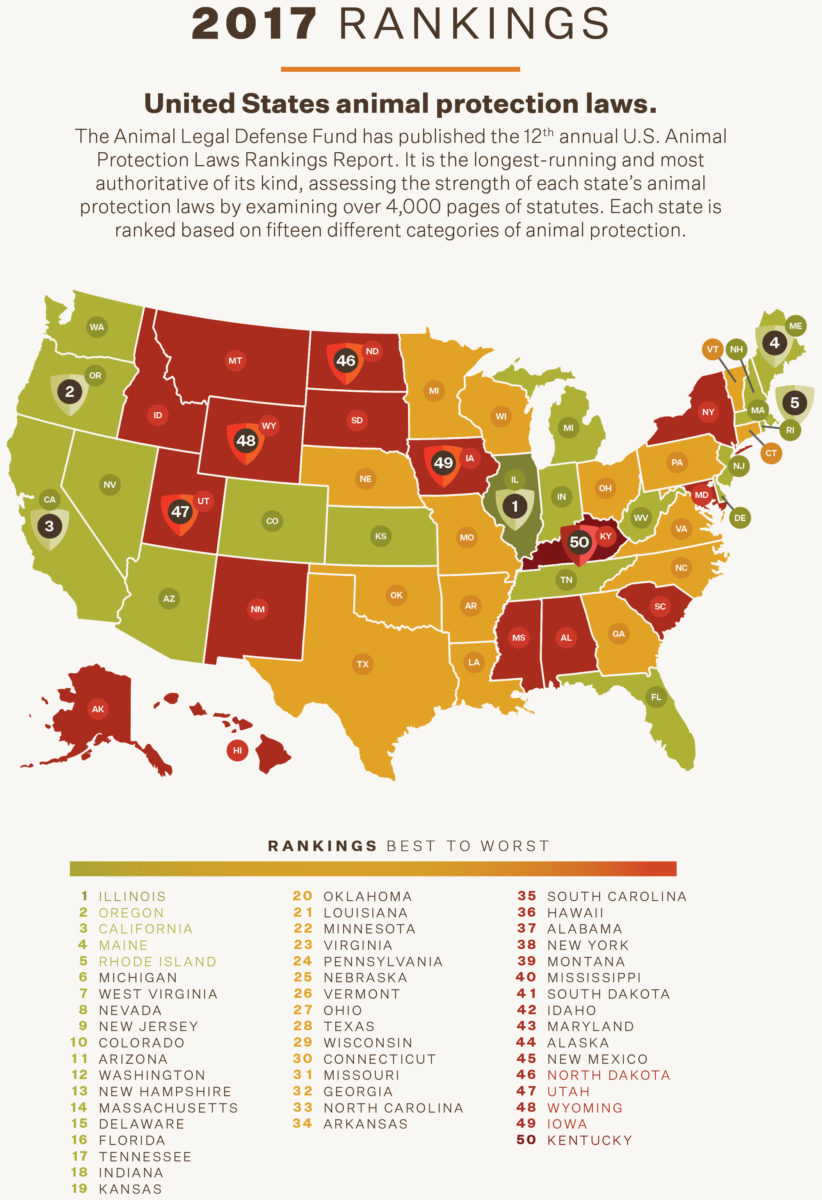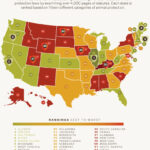The question of whether cruelty to animals is classified as a felony is one that resonates with many advocates of animal rights and ethics. While animal welfare has gained traction in public consciousness, the legal ramifications surrounding animal cruelty vary significantly across the United States. This disparity lays bare not only the intricacies of the law but also the societal values that dictate our treatment of non-human beings.
To comprehend this complex landscape, one must first navigate the diverse definitions and classifications of animal cruelty. In broad terms, animal cruelty can be categorized into two principal types: active cruelty, which entails willful infliction of harm, and passive cruelty, characterized by neglectful behavior that leads to suffering. The legal lexicon surrounding animal cruelty often employs terms such as “abuse,” “neglect,” and “aggravated cruelty,” each carrying distinct implications and legal penalties.
As we embark on a state-by-state exploration, it becomes evident that certain states have enacted rigorous statutes, establishing cruel acts as felonies. For instance, states such as Illinois and California have instituted laws that classify egregious forms of animal abuse as felonies, reflecting a commitment to staunchly protect animal welfare. In Illinois, for example, aggravated cruelty may incur penalties such as significant fines and imprisonment, emphasizing society’s intolerance for extreme acts of violence against animals.
Conversely, in states like Idaho and South Dakota, laws remain relatively lax, often categorizing most instances of animal cruelty as misdemeanors. This disparity invites speculation regarding the cultural and societal underpinnings of each state. States that exhibit stringent laws often correlate with strong activist movements, highlighting an evolving paradigm where animals are increasingly viewed as sentient beings deserving of empathetic treatment, rather than mere property.
One notable observation is that emotional resonance frequently accompanies legislation. The emotive capacity of animals—their ability to feel pain, fear, and joy—compels many advocates to push for reforms that elevate animal protection laws to a felony status. This emotional appeal resonates with legislators and constituents alike, resulting in substantial shifts in policies. For instance, in recent years, public outcry following high-profile animal cruelty cases has spurred legislative action in several states, leading to increased penalties and broader prohibitions.
However, not all instances of animal cruelty incite the same fervor. Cases involving domestic pets, particularly dogs and cats, tend to attract more public attention and legislative action compared to agricultural animals. This discrepancy raises questions about species bias and the intrinsic values placed on different animals within the legal framework. Why do laws recognize the suffering of a dog in a home more profoundly than that of a cow in a factory farm? These reflections delve deep into societal norms and invisibly weave through the fabric of legal discussions.
Interestingly, the complexity of animal protection legislation often leaves room for significant variations even within individual states. While a particular act of cruelty may fall under a felony jurisdiction, nuanced details—such as intent and the animal’s status (pet versus livestock)—can abruptly shift its classification. Consequently, the need for a universal standard becomes increasingly relevant. A national framework that uniformly defines cruelty and its ramifications could facilitate a more cohesive approach to animal welfare, minimizing the legal gray areas that often underpin cases of neglect or abuse.
In some regions, the criminal justice system must grapple with further implications tied to animal cruelty, such as the intersection of animal rights and mental health. Research indicates that individuals convicted of animal cruelty offenses often present with underlying psychological issues, highlighting a correlation that cannot be ignored. Thus, the responses from the legal system may necessitate not only punitive measures but also rehabilitative approaches addressing the roots of such behaviors.
The argument for stronger animal cruelty laws is further bolstered by the principles of restorative justice, which advocate for mending the harm caused rather than solely punishing the offender. In this paradigm, increased penalties for animal abuse can serve not merely as a deterrent but also as a societal indictment of violence towards the most vulnerable beings among us. By fortifying laws that categorize these actions as felonies, states send an unequivocal message: cruelty is not only intolerable but also inextricably linked to the values we hold as a community.
As this discussion unfolds, one cannot overlook the role of education in shaping perceptions and laws surrounding animal cruelty. Initiatives that elevate awareness about animal sentience and the implications of cruelty can cultivate compassion and understanding within communities. Educational programs that teach empathy toward all living beings serve as powerful tools in transforming societal attitudes, ultimately influencing legislative change from the grassroots level upward.
In conclusion, while the question of whether cruelty to animals is a felony varies state by state, the pursuit of more humane treatment of animals is a unifying goal among advocates. The legal landscape may be convoluted, but the conversation surrounding animal rights continues to evolve, pushing the boundaries of societal understanding and legislative action. Through continued advocacy, education, and community engagement, there lies hope for a future where the idea of animal cruelty is universally condemned, regardless of geographic location.






